Overview:
Cyprus, an island nation in the eastern Mediterranean, is renowned for its stunning coastline, ancient history, and unique blend of Greek and Turkish influences.
From captivating archaeological sites and sun-drenched beaches to charming mountain villages, Cyprus offers an array of experiences that make it a must-visit destination.
Whether you are an adventure seeker, a history buff, or simply in search of a relaxing Mediterranean escape, Cyprus offers countless attractions that will leave lasting memories.
Let’s explore the top 15 tourist attractions in Cyprus that capture the beauty and heritage of this fascinating island.
Table of Contents
1. Ancient Kourion (Limassol District)
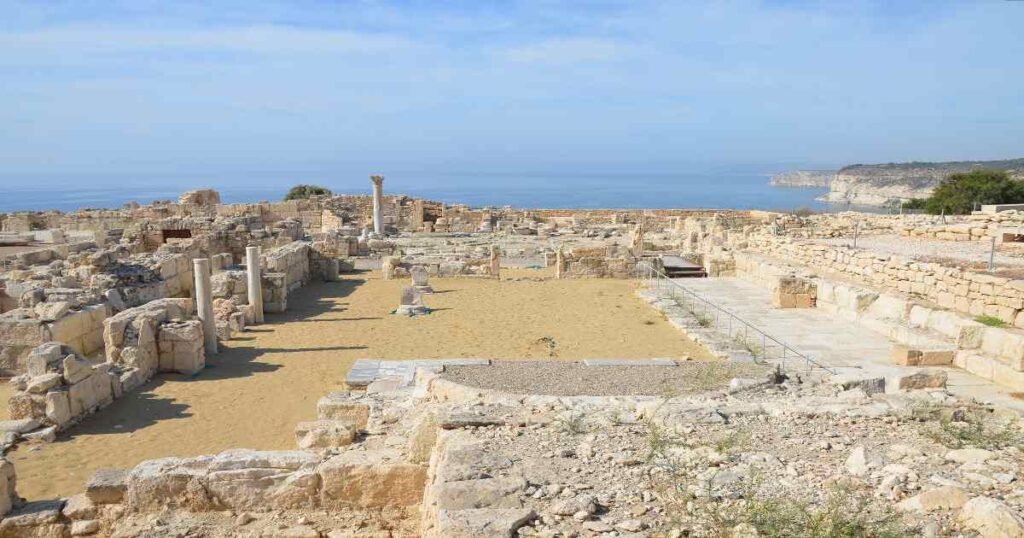
The Ancient Kourion is one of the most impressive archaeological sites in Cyprus, offering visitors a glimpse into the island’s rich Greco-Roman past.
Historical and Cultural Significance: Dating back to the 12th century BC, Kourion flourished under the Roman Empire. The site includes a large theater, public baths, and exquisite mosaics that depict mythological scenes.
Unique Features: The Greco-Roman theater, still used for performances today, offers breathtaking views over the Mediterranean Sea.
Best Time to Visit: Spring and fall, when the weather is pleasant and crowds are fewer.
Travel Tips:
- Transportation: Kourion is located near Limassol and is accessible by car.
- Accommodation: Consider staying in Limassol for proximity to Kourion and other attractions.
- Local Customs: Be respectful of the historical site by not climbing on fragile ruins.
2. Nissi Beach (Ayia Napa)
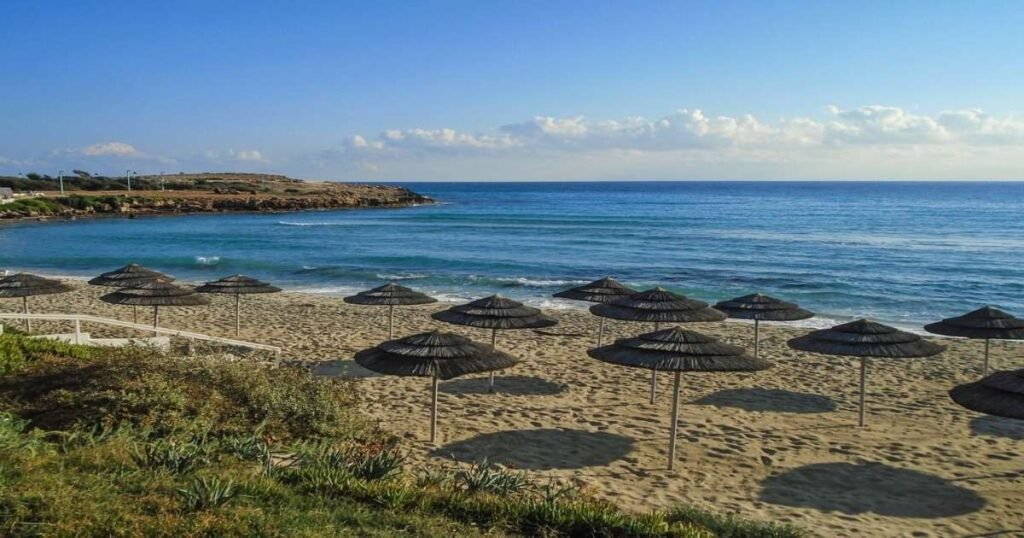
Famous for its white sands and crystal-clear turquoise waters, Nissi Beach is one of Cyprus’s most popular beaches, attracting both locals and tourists.
Historical and Cultural Significance: Nissi Beach, holds cultural significance as a major tourist destination in Cyprus, known for its natural beauty, historical landmarks, and vibrant local traditions.
Unique Features: The beach’s shallow waters and a small islet accessible by foot make it ideal for sunbathing, swimming, and water sports.
Best Time to Visit: Summer months (June to September) for lively beach vibes and water sports.
Travel Tips:
- Transportation: Located near Ayia Napa, easily accessible by public transport or car.
- Accommodation: Ayia Napa offers a wide range of hotels and resorts.
- Local Customs: Cyprus beaches can be busy during summer, so arrive early to secure a spot.
3. Troodos Mountains
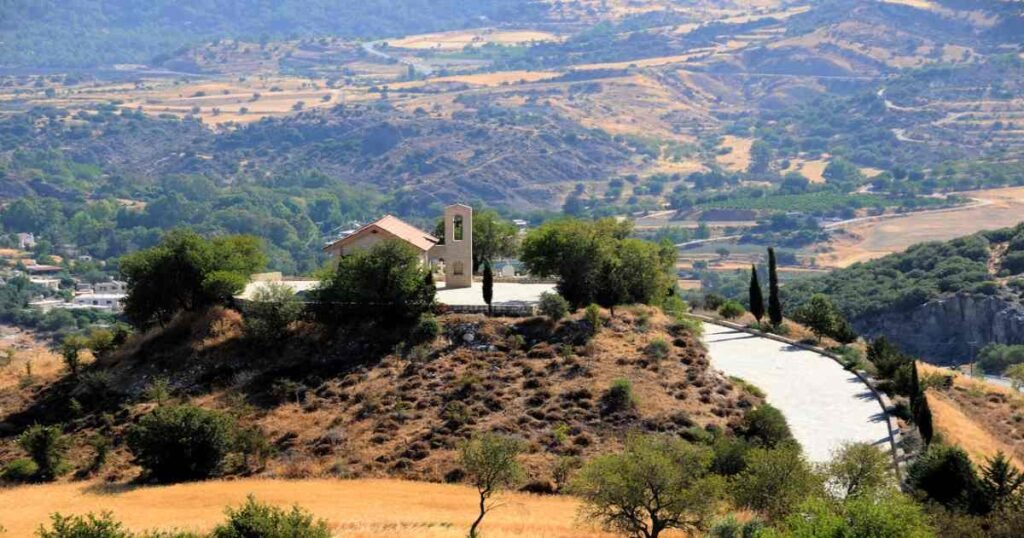
The Troodos Mountains are a haven for nature lovers and history buffs, with their scenic trails, charming villages, and Byzantine monasteries.
Historical and Cultural Significance: The mountains house UNESCO-listed painted churches with richly adorned frescoes.
Unique Features: Visitors can explore picturesque trails, traditional villages like Kakopetria, and the beautiful Kykkos Monastery.
Best Time to Visit: Spring and summer for hiking, winter for skiing.
Travel Tips:
- Transportation: A car is recommended for exploring the mountain villages.
- Accommodation: Stay in mountain lodges or traditional guesthouses.
- Local Customs: Dress modestly when visiting monasteries.
4. Paphos Archaeological Park
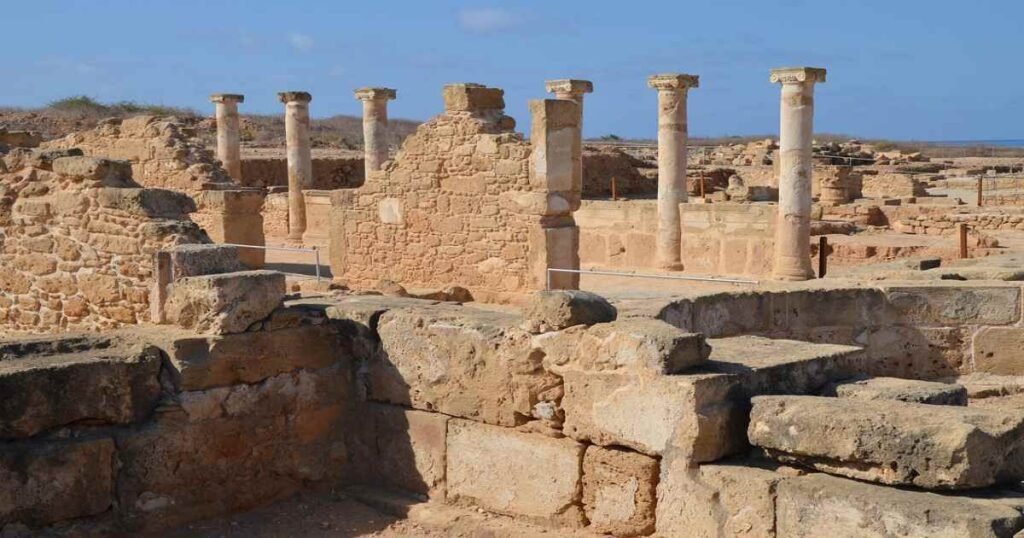
Paphos Archaeological Park showcases some of Cyprus’s most fascinating ancient ruins and is a UNESCO World Heritage Site.
Historical and Cultural Significance: The park includes Roman villas, theaters, and impressive mosaics dating from the 2nd to 5th centuries AD.
Unique Features: Noteworthy attractions include the House of Dionysus, the House of Theseus, and the ancient Odeon.
Best Time to Visit: Spring and fall, for comfortable temperatures and fewer tourists.
Travel Tips:
- Transportation: Located in Paphos, accessible by public transport or car.
- Accommodation: Paphos has numerous hotels, from budget-friendly to luxury options.
- Local Customs: Wear sunscreen and carry water, as the park involves a lot of walking.
5. Kyrenia (Girne) Castle

Kyrenia Castle, located on the northern coast of Cyprus, is a well-preserved medieval castle offering panoramic views of the harbor.
Historical and Cultural Significance: The castle dates back to Byzantine times and was later fortified by the Venetians. It houses the Shipwreck Museum, showcasing a 4th-century BC Greek merchant ship.
Unique Features: Visitors can explore the castle’s fortifications, dungeons, and historical exhibits.
Best Time to Visit: Year-round, with spring and autumn offering pleasant weather.
Travel Tips:
- Transportation: Accessible from Kyrenia town center.
- Accommodation: Stay in Kyrenia to explore its historical sites and nearby beaches.
- Local Customs: Take note of the region’s diverse cultural influences.
6. Cape Greco National Forest Park
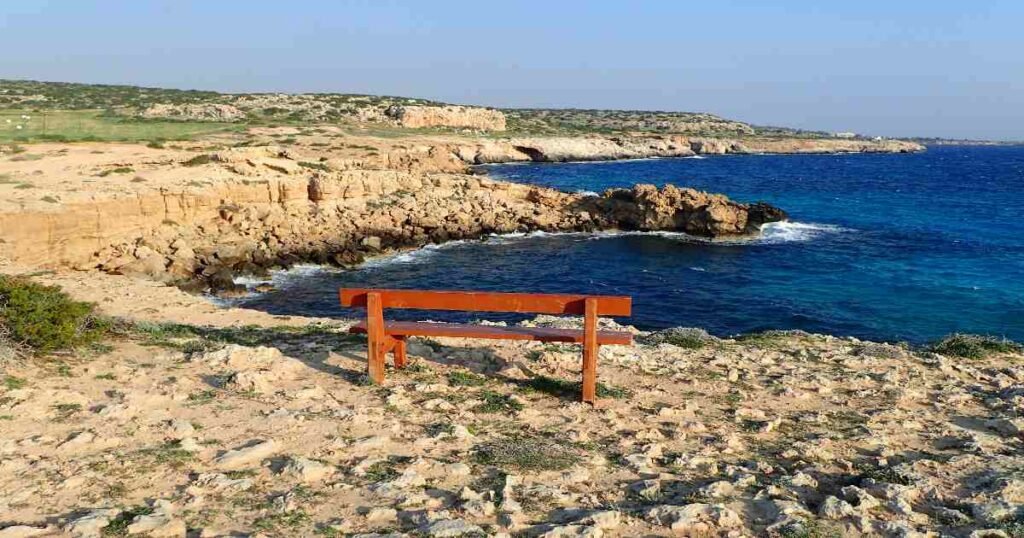
Cape Greco, located between Ayia Napa and Protaras, is a natural wonder known for its stunning sea caves, hiking trails, and breathtaking views.
Unique Features: Visitors can explore sea caves, hike or cycle through scenic trails, and even spot the “Blue Lagoon” from viewpoints.
Best Time to Visit: Spring and early summer, for pleasant weather and vibrant wildflowers.
Travel Tips:
- Transportation: Accessible by car or bike from Ayia Napa.
- Accommodation: Consider staying in Protaras or Ayia Napa for easy access.
- Local Customs: Respect the natural environment by avoiding littering.
7. Larnaca Salt Lake & Hala Sultan Tekke
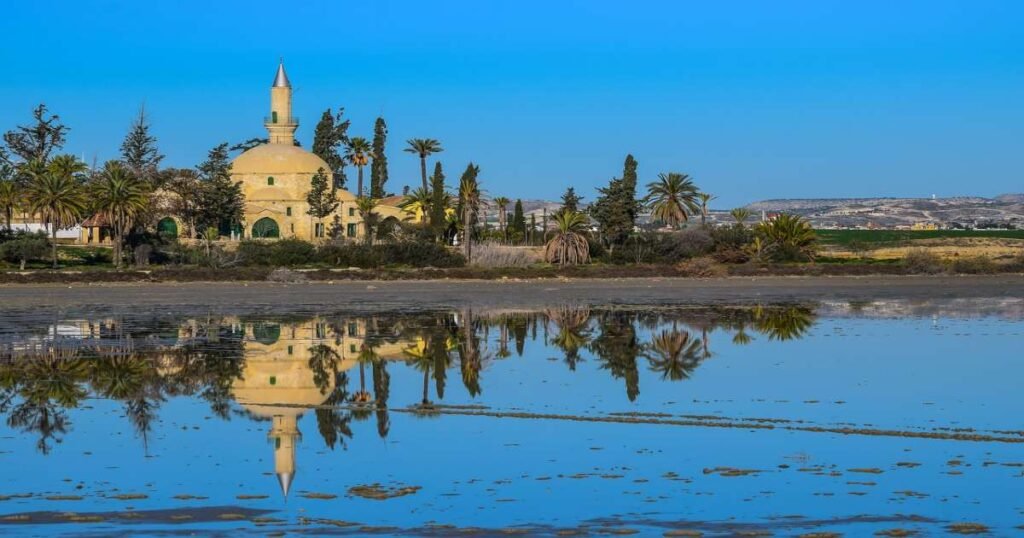
The Larnaca Salt Lake is a stunning natural attraction known for its seasonal flamingo population. Hala Sultan Tekke, a revered Islamic site, lies on its shores.
Historical and Cultural Significance: The mosque is a pilgrimage site for Muslims and a beautiful example of Ottoman architecture.
Unique Features: In winter, the lake fills with water and hosts migratory flamingos, while in summer, it becomes a salt flat.
Best Time to Visit: Winter and early spring to see flamingos.
Travel Tips:
- Transportation: Accessible by car from Larnaca.
- Accommodation: Stay in Larnaca for proximity to beaches and attractions.
- Local Customs: Visitors to the mosque should dress modestly.
8. Kolossi Castle

Kolossi Castle is a medieval fortress located near Limassol. It is often associated with the production of sugar, as the area around it was once known for its sugar cane plantations.
Historical and Cultural Significance: Built by the Knights of St. John in the 13th century, it was a key stronghold in medieval Cyprus.
Unique Features: The castle’s compact size belies its historical significance, with views of the surrounding countryside.
Best Time to Visit: Year-round, with spring and autumn offering cooler temperatures.
Travel Tips:
- Transportation: Easily accessible by car from Limassol.
- Accommodation: Limassol offers a variety of lodging options.
- Local Customs: Explore the surrounding beautiful yards and follow the local guidelines.
9. Aphrodite’s Rock (Petra tou Romiou)
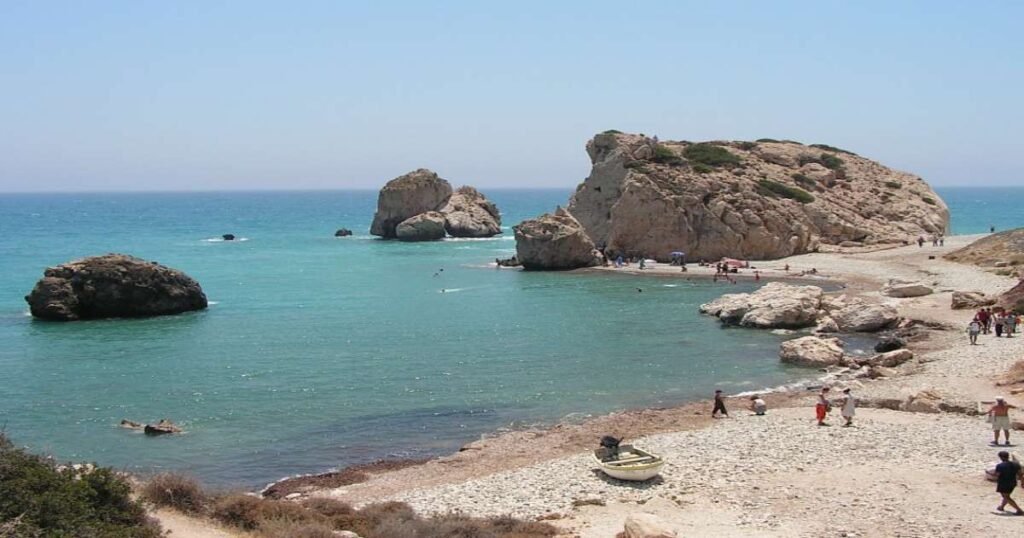
According to legend, Aphrodite, the Greek goddess of love and beauty, was born at this striking rock formation, making it a place of mythological and cultural importance.
Historical and Cultural Significance: Aphrodite’s Rock has long been associated with love, and its breathtaking coastal scenery attracts both locals and tourists. It remains one of the island’s most iconic landmarks.
Unique Features: The rock formation, surrounded by azure waters, creates a picturesque spot for swimming and photography.
Best Time to Visit: Sunset hours, when the rock is bathed in golden hues, offering a magical view.
Travel Tips:
- Transportation: Accessible by car via the main road between Limassol and Paphos.
- Accommodation: Paphos offers a variety of lodging options, from budget stays to luxury resorts.
- Local Customs: Swimming around the rock is believed to bring good luck.
10. St. Hilarion Castle (Kyrenia)

Perched high in the Kyrenia mountain range, St. Hilarion Castle is one of the best-preserved Crusader castles in Cyprus, offering visitors a journey into medieval history.
Historical and Cultural Significance: The castle has a rich history tied to the Crusaders and offers breathtaking views of the surrounding landscapes.
Unique Features: Explore the winding staircases, grand halls, and stunning views of Kyrenia’s coast.
Best Time to Visit: Spring and autumn, when the weather is mild for exploring the steep pathways.
Travel Tips:
- Transportation: Accessible by car from Kyrenia.
- Accommodation: Kyrenia offers many charming guesthouses and hotels.
- Local Customs: Wear sturdy shoes for climbing the castle’s many steps.
11. Omodos Village
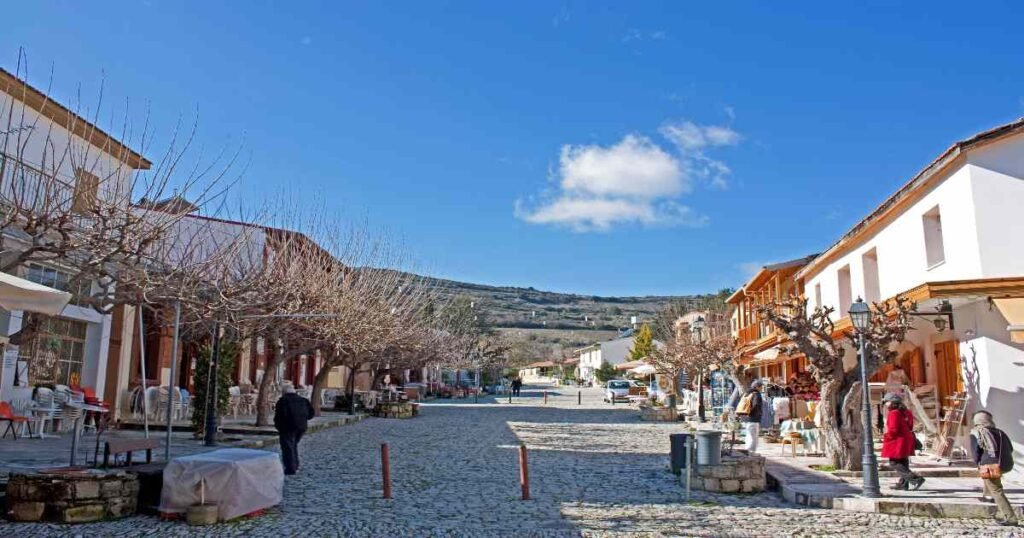
Nestled in the Troodos Mountains, Omodos is a charming traditional village known for its cobbled streets, wine-making heritage, and cultural festivals.
Historical and Cultural Significance: The village is home to the historic Monastery of the Holy Cross and is famous for producing Commandaria wine.
Unique Features: Visitors can stroll through narrow streets, sample local wines, and explore artisan workshops.
Best Time to Visit: Spring and autumn, when cultural festivals bring life to the village.
Travel Tips:
- Transportation: Best accessed by car for a scenic drive through the mountains.
- Accommodation: Stay in a traditional inn for an authentic experience.
- Local Customs: Sample traditional Cypriot sweets, such as soutzoukos, in local shops.
12. Akamas Peninsula National Park
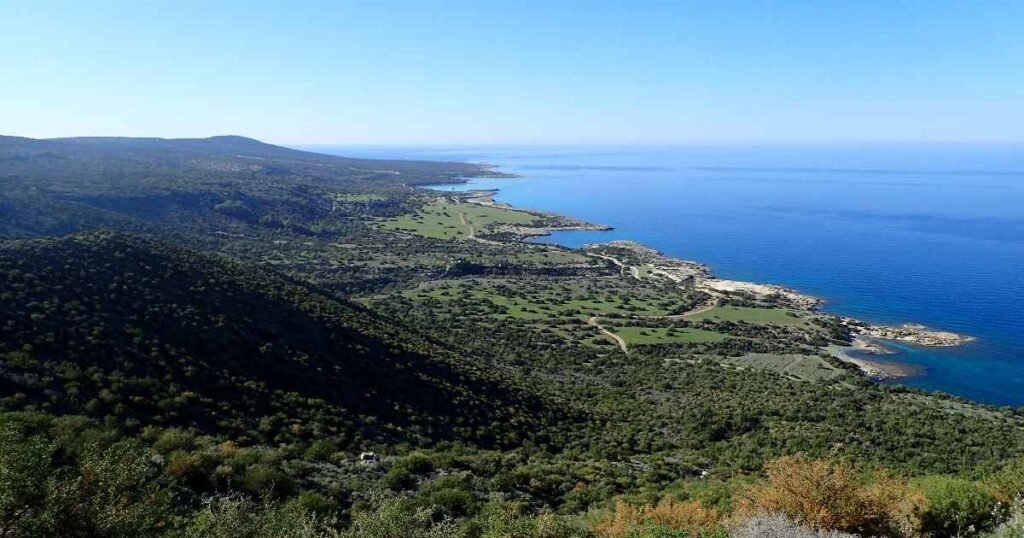
The Akamas Peninsula is a pristine wilderness area on the western tip of Cyprus, known for its rugged terrain, wildlife, and breathtaking coastal views.
Unique Features: Visitors can hike, cycle, or take boat trips to explore secluded bays, sea caves, and the Blue Lagoon.
Best Time to Visit: Spring, when wildflowers bloom and weather conditions are ideal for outdoor exploration.
Travel Tips:
- Transportation: A 4×4 vehicle is recommended for exploring rough terrain.
- Accommodation: Stay in nearby towns like Polis for easy access to the park.
- Local Customs: Respect the natural habitat and wildlife.
13. Tombs of the Kings (Paphos)
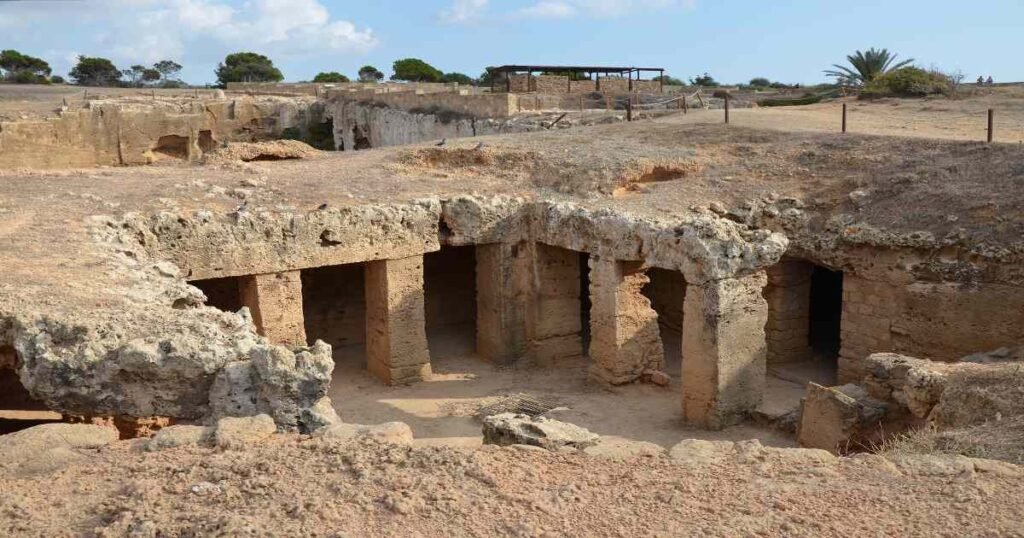
This UNESCO World Heritage Site features a collection of underground tombs carved out of solid rock, dating back to the 4th century BC.
Historical and Cultural Significance: Despite the name, no kings were buried here; rather, it served as the resting place for Paphitic aristocrats and officials.
Unique Features: The tombs’ impressive size, Doric columns, and intricate carvings make it a highlight for history enthusiasts.
Best Time to Visit: Spring and autumn are good for mild weather.
Travel Tips:
- Transportation: Located near Paphos, easily accessible by car or public transport.
- Accommodation: Paphos has a variety of hotels to choose from.
- Local Customs: Respect the sanctity of the historical site and avoid touching the artifacts.
14. Lefkara Village
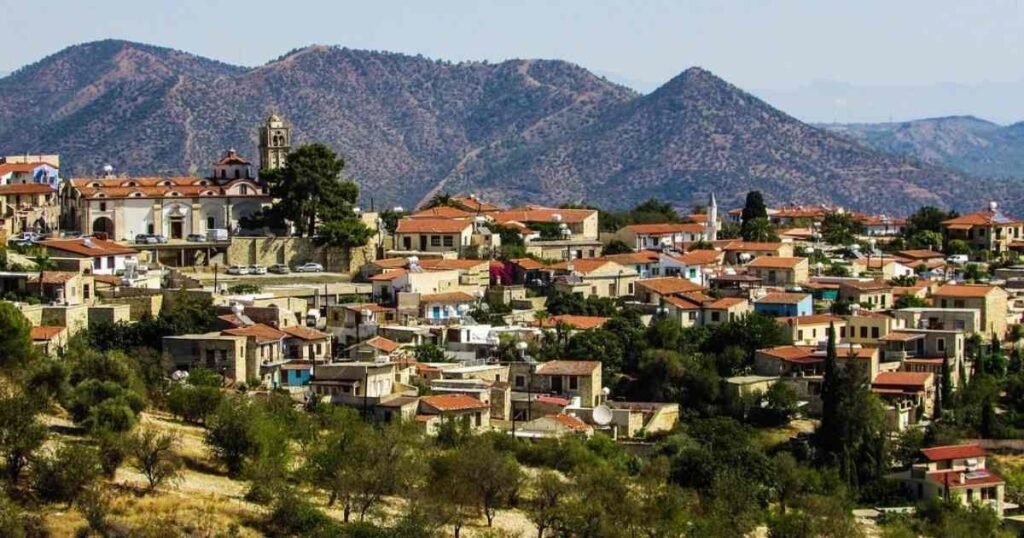
Renowned for its lace-making and silverwork, Lefkara Village offers a glimpse into Cyprus’s rich artisan culture.
Historical and Cultural Significance: The village’s lace, known as “Lefkaritika,” was even said to be purchased by Leonardo da Vinci.
Unique Features: Visitors can explore quaint streets, artisan workshops, and the Lefkara Traditional Museum.
Best Time to Visit: Year-round, but spring and autumn offer pleasant temperatures for walking tours.
Travel Tips:
- Transportation: Best visited by car from Larnaca or Nicosia.
- Accommodation: Traditional guesthouses offer a cozy stay.
- Local Customs: Support local artisans by purchasing authentic Lefkaritika lace.
15. Ayia Napa Monastery
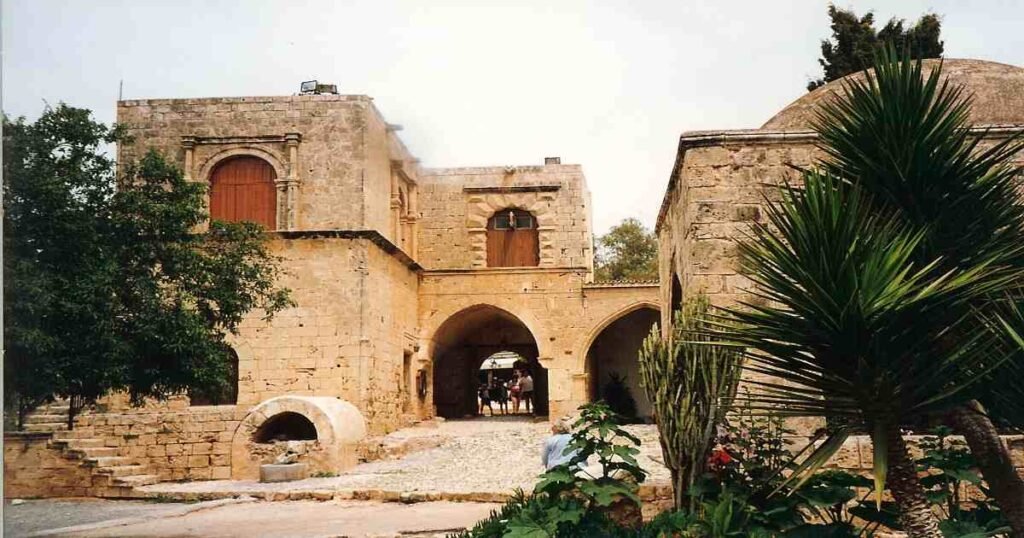
Located in the heart of Ayia Napa, this 16th-century Venetian monastery is a striking contrast to the area’s vibrant nightlife.
Historical and Cultural Significance: Built around a cave, it has a beautiful stone courtyard and is dedicated to the Virgin Mary.
Unique Features: The ancient sycamore tree in the courtyard is over 600 years old, adding to the site’s charm.
Best Time to Visit: Spring or autumn for quieter, more serene visits.
Travel Tips:
- Transportation: Situated in Ayia Napa’s town center.
- Accommodation: Numerous hotels and resorts are within walking distance.
- Local Customs: Be respectful when visiting this sacred site.
Also Read: Top 15 Tourist Attractions In Turkey
Conclusion
Cyprus offers a captivating blend of historical treasures, natural beauty, and warm hospitality.
From ancient ruins and charming villages to stunning beaches and unique cultural experiences, the island has something for everyone.
Embark on a journey through its many attractions and discover why Cyprus continues to captivate travelers from around the world.
FAQs
Q1: What is the best time to visit Cyprus?
A: The best time to visit Cyprus is during spring (March to May) and autumn (September to November), when the weather is pleasant, and crowds are fewer.
Q2: Is Cyprus a good destination for history lovers?
A: Yes, Cyprus has a rich history with numerous archaeological sites, castles, and UNESCO World Heritage sites that appeal to history enthusiasts.
Q3: Can I swim at Aphrodite’s Rock?
A: Yes, visitors often swim around the rock, as legend holds that it brings good fortune.
Q4: What should I know about Cypriot cuisine?
A: Cypriot cuisine is a mix of Greek and Middle Eastern flavors, with dishes like souvlaki, halloumi cheese, and meze platters being popular.
Q5: Do I need a car to explore Cyprus?
A: While public transport is available in major towns, renting a car is recommended for exploring remote villages, mountains, and beaches.

